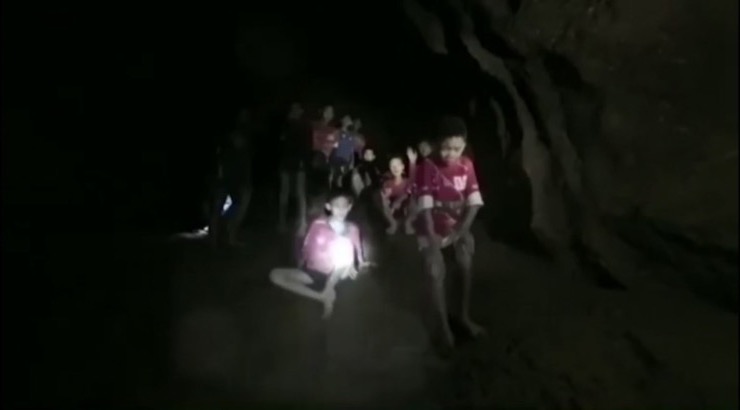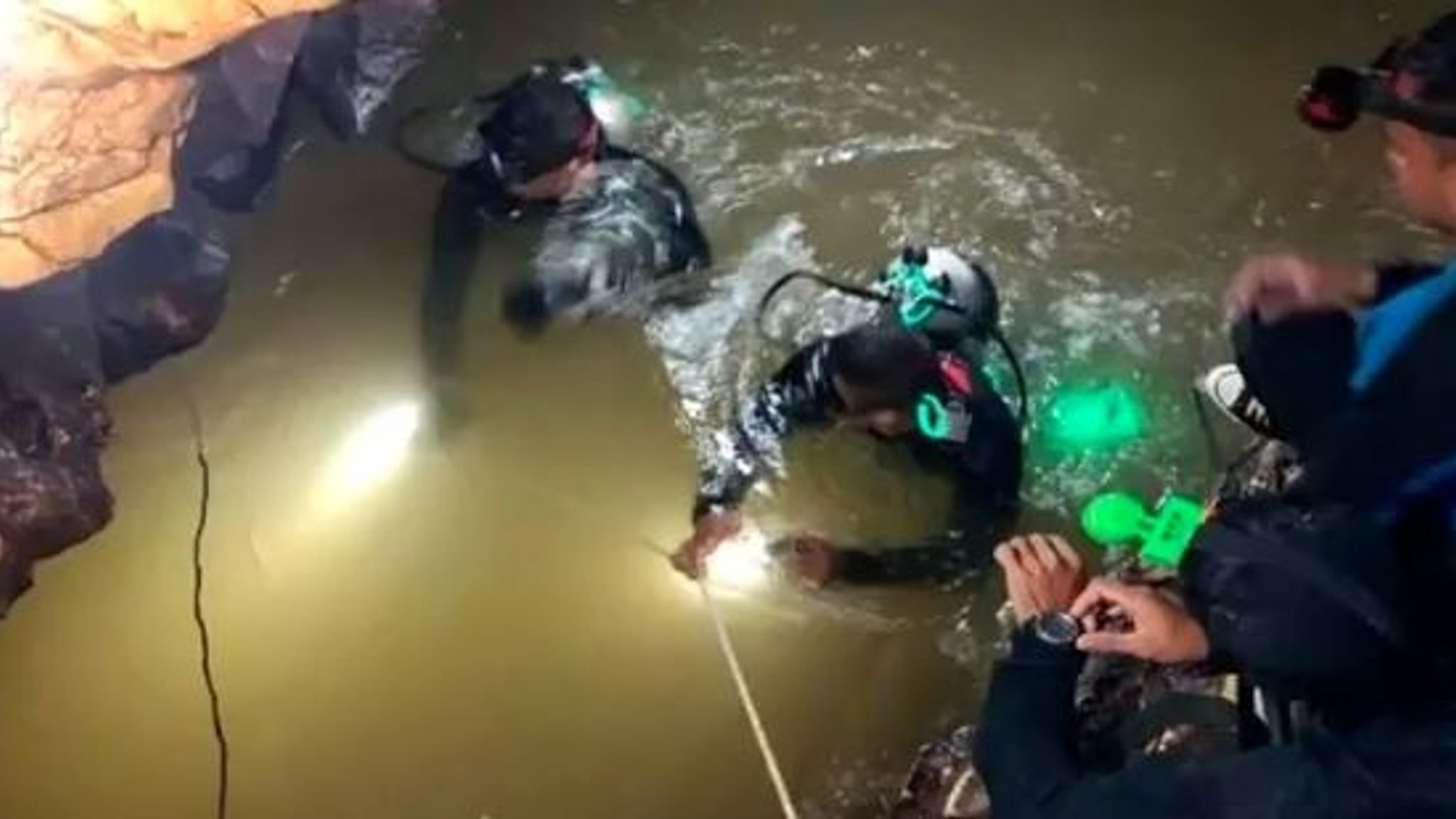

Rains are predicted to fall in two days so rescue teams are desperate to get them out in this dry window if they can do so safely.
BRITISH DIVER LOST CAVES FULL
By pumping out the water in certain sections of the cave officials believe at this rate they may be able to drop water levels down to a couple feet as long as it doesn’t rain.Ĭurrents in the water and the overall technicality of the cave make the dive hard and dangerous even for experienced cave divers so they are hoping that the pumping effort will work but the boys are being taught scuba diving techniques and practicing using full face masks if they need to make it out through the water.Ī medical assessment of the group determine that two of the boys and the coach are too exhausted and malnourished to move the group out today. Experts who took part in the Chilean Miner situation offer their help to the boys and authorities to help them through the situation.Įmergency crews report that the water pumps are working effectively and if the rain holds out a few more days then the boys and their coach may be able to walk out. Many believe the scuba diving method is too dangerous but the alternative plan may leave them underground for 4 months that could have serious after effects on their mental health. The boys are not strong swimmers or scuba divers but authorities believe there are only two methods to get them all out safely drain the water filling the caves before more rain falls so they can walk out or teach the boys to scuba dive and lead them out underwater. Now they know where they are Thai Navy Divers bring medical supplies as well as food, fresh water and blankets to keep the boys strength up. July in Northern Thailand where the cave system is when the rainy season begins so rescue teams are desperate to use time effectively before the rains start again and raise water levels further. By laying a thick 8mm line through the cave Navy divers begin to plan the possibility to lead the boys out one by one escorted by a diver breathing from the same cylinder with stage cylinders along the route. Getting too and from their location takes between 5 and 6 hours of scuba diving and cave navigation that requires specialist gear and training. This is not the first time they have searched cave systems though and have conducted multiple underwater searches before. Certain sections of the path are fully submerged with some tight passageways restricting access but the divers begin laying navigation lines and work to lay lines of communication to the boys for morale but it keeps becoming damaged through the water and tight tunnels.īritish divers Richard Stanton and John Volanthem spearheaded the diving search swimming upstream through current to find the boys. The British cave divers found the boys and their coach in an air pocket deep in the cave system and reassured them that help was on the way.

They manage to get 20m down but the boys are far deeper. Powerful pumps have been set up to drain the sumps and lower water levels while cave divers explore the cave to find them.īritish cave experts explore a chimney workers suggest may be an alternative access point that may not suffer from flooding and everybody is keen to explore other possibilities to get them out.

Soon after the alert volunteers from all around the world, Navy teams and British cave diving experts rushed to the scene to help search for and rescue the victims. A park ranger first alerted authorities when he noticed their bikes were still chained up at the entrance and people could still be inside the caves that are known to be dangerous in the rainy season.

It is believed that their plan was to chain up their bikes at the entrance and walk all the way the cave system through to the other side however while they were underground monsoon rains began to fall and flooded sections of the cave. Having explored the cave before they pushed further into the cave past warning signs to explore deeper to about 3 km underground into the cave system. Seasonal rain flooded the cave they were exploring trapping them inside and an international rescue effort lead by cave diving experts work around the clock to save them.Ĭave diving is one of the riskiest forms of scuba diving but it may be the fastest way to get them out if monsoon rains continue to fall.ġ2 boys aged between 11 and 16 and their football coach decided to explore a popular cave in northern Thailand. Scuba diving techniques are currently being taught to the boys and their coach who have been trapped on a small ledge 1km underground in the tham luang caves in Northern Thailand.


 0 kommentar(er)
0 kommentar(er)
